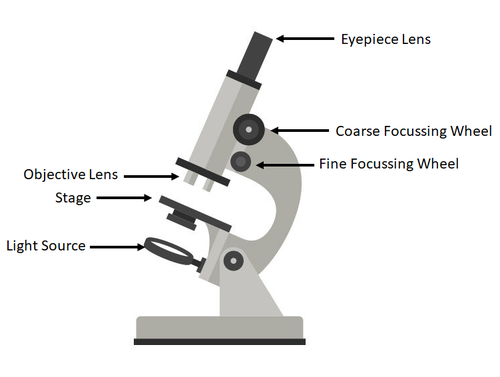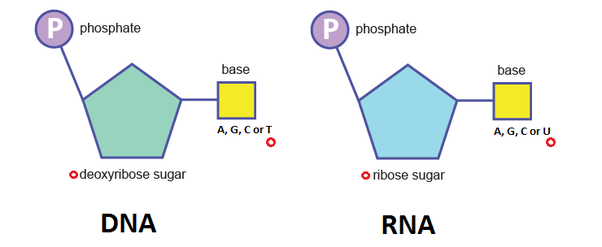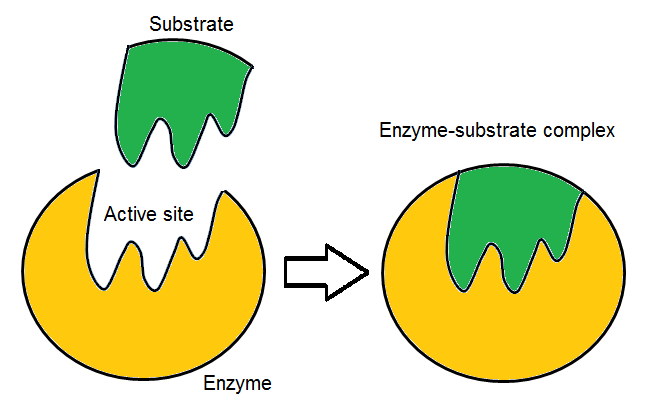Biology info goes here
B1 - Cell Level Systems
Cells
An organism can be a eukaryote or a prokaryote.
Eukaryotes are made from complex eukaryotic cells. Prokaryotes are made from smaller and simpler prokaryotic cells.
Eukaryotic Cells
Types of eukaryotic cells include plant and animal cells. These consist of an array of complex structures.
Animal Cell
-
Nucleus - Contains DNA in the form of chromosomes.
-
Cytoplasm - Dense liquid where most chemical reactions take place.
-
Mitochondria - Where cellular respiration take place and provides energy to the cell.
-
Cell Membrane - Holds the cell together and controls what can pass through the cell using a selective barrier. Also contain receptor molecules which are used for cell communication.
-
Ribosomes - The site of protein synthesis.
Plant Cell
Plant cells have everything that animal cells have, plus some additional structures:
-
Cellulose Cell Wall - A rigid cell wall that gives support for the cell.
-
Chloroplasts - Where photosynthesis occurs, contains green pigment called chlorophyll.
-
Permanent vacuole - Contains cell sap (a mixture of sugars, salt and water)
Prokaryotic Cells
One type of prokaryotic cell is a bacterial cell. Prokaryotic cells are typically uni-cellular, meaning the entire organisms consists of just a singular cell.
A bacteria cell consists of:
-
Cytoplasm - Dense liquid where most chemical reactions take place
-
Cell Membrane and Wall - Provides structural support to the cell and controls what can pass through the cell using a selective barrier. Also contain receptor molecules which are used for cell communication.
-
Chromosomal DNA - A singular, circular strand of DNA that contains all the genes the bacteria needs.
-
Plasmids - Small rings of DNA that carry extra genes such as drug resistance that aren’t always needed but may sometimes be used or exchanged between bacteria.
-
Flagella - Thread like structures that protrude out of the bacteria that allow it to propel itself.
Microscopy
Microscopes are used to examine objects that are too small to be seen by the naked eye. There are two main types of microscopes: light microscopes and electron microscopes.
Light Microscopes
Invented in the 1590s, light microscopes let us see things such as nuclei and chloroplasts.

Parts of a Light Microscope. By: Key Stage Wiki
The main parts of a light microscope include:
-
Eyepiece lens - looked through to see the image, also magnifies the image
-
Objective lens - magnifies the image. Usually there are three different objective lenses
-
Stage - where the specimen/ slide is placed
-
Focusing wheels - used to adjust the slide into focus
Resolution and Magnification
To find the total magnification of a microscope configuration, just multiple the eyepiece lens magnification by the objective lens magnification.
\[\textrm{total magnification} = \textrm{eyepiece lens magnification} \times \textrm{objective lens magnification}\]If you do not know the magnification of the lenses, you can find magnification as long as you can measure the size of the image and real size of the specimen.
\[\textrm{magnification} = \frac{\textrm{image size}}{\textrm{real size}}\]The image size is the size magnified image, the real size is the size of the actual specimen. This means that normally the image will have a magnification more than 1 as the magnified image will almost always be larger than the real size. E.g. a magnification of 2x, which would make the image look double the size.
Genetics
DNA
DNA stands for Deoxyribonucleic Acid, it is a polymer made of nucleotide monomers and forms a double helix shape. It is stored inside the nucleus. Each nucleotide can have one of four bases: adenine, cytosine, guanine and thymine.
Bases always pair complementarily:
\[\text{Adenine}↔︎ \text{Thymine}\\ \text{Cytosine} ↔︎ \text{Guanine}\]Nucleotides
Nucleotides consist of a phosphate group, a deoxyribose sugar and one of the four bases mentioned above. Nucleotides are stringed together into two strands, which attach to form DNA.

RNA and DNA nucleotides By: uctsc.org
Protein Synthesis
Proteins are made by reading DNA, this process is called protein synthesis. Proteins are polymers made from amino acid monomers, different chains of amino acids create different proteins. Each 3 bases of DNA code for one amino acid, this is called the triplet code.
Transcription
Transcription is the first step of protein synthesis, and is the process of taking a single gene of DNA and copying it into mRNA.
Because DNA is too large to leave the nucleus, a copy of the gene needed is made, in the form of mRNA(messenger RNA). The structure of mRNA is similar to DNA, though with key differences.
mRNA is shorter than DNA as it just codes for a single gene. mRNA is single stranded, unlike DNA which is double stranded. Furthermore, instead of the base thymine, mRNA contains the base uracil.
Translation
After transcription, the mRNA leaves the nucleus and enters the cytoplasm, where translation occurs. Translation is the process of creating proteins from the mRNA triplet codes by assembling amino acids with ribosomes.
Once the mRNA reaches a ribosome, they bind together and the ribosome begins to build the protein. Amino acids that match the triplet codes on the mRNA are joined together, until a protein is built.
Enzymes
In order for cells to function properly, lots of chemical reactions have to take place. However, these reactions naturally are very slow. One solution to speed up these reactions would be to raise temperatures, however this requires a lot of energy; damages cells and can increase non-useful reactions.
However, to speed up reactions, a catalyst can also be used. A catalyst is a substance that increases the speed a chemical reaction without being changed or used up in the process. Enzymes are biological catalysts that are large proteins, that help speed up different reactions based on their shape. Enzymes can either split a substrate(reactant) into smaller products, or they can combine multiple substrates, into a single product.
A reaction can only be catalysed if the active site fits the substrate. The active site of an enzyme is a part of the enzyme where the reaction occurs, and has to be the same shape as the substrate in order to catalyse the reaction.
The lock and key model

Lock and key. From: Wikimedia Commons
Originally, scientists thought that the enzyme had to be exactly the same shape as the substrate in order for the reaction to be catalysed as the substrate would not be able to fit in the active site. However, we now know that slight changes in the shape of the active site do not completely stop the reaction from being catalysed, but can effect the efficiency of the reaction.
Factors that can affect enzymes
Because enzymes are extremely specific, there are many factors that can effect the rate of reaction, which is a measurement of how efficient the reaction is.

Enzyme rate of reaction. From: BioNinja
Temperature
Just like in any other reaction, changing temperature increases the rate of reaction as the enzyme and substrates move around more because of their higher kinetic energy. However, after a certain threshold, some of the bonds holding the enzyme together begin to break. This makes the enzyme denatured and it loses its shape, causing a drastic decline in the rate of reaction.
Each enzyme has its own optimum temperature, where the reaction is the fastest. This is the temperature just before it gets too hot and starts to denature. The optimum temperature for most human enzymes is around $37\degree \mathrm{C}$, which is the same temperature as our bodies.
Acidity
$\mathrm{pH}$ can effect enzymes too. If the $\mathrm{pH}$ is too high or too low, the bonds of the enzyme are changed and the enzyme is irreversibly denatured.
All enzymes have an optimum $\mathrm{pH}$ that they work best at. Which is often neutral $\text{pH }7$. However, this is not always the case, for example, enzymes that break down food in the stomach work best at higher acidity, as the stomach has high acidity.
Substrate concentration
The higher the substrate concentration, the faster the reaction as there is a higher chance of an enzyme meeting a substrate. However, this is only true up to a certain point as there will be a point where all the enzyme’s active sites are full and adding more substrates makes no difference.
Investigating Enzyme Activity
✏✏✏✏✏✏
Respiration
Respiration is the process of transferring energy from the breakdown of glucose. Cellular respiration is an exothermic reaction which continuously occurs in living cells.
Organisms use energy to maintain body temperature, build proteins and contract muscles(to move around).
Aerobic respiration
\[\ce{C6H12O6 + 6O2 -> 6CO2 + 6H2O}\\ \small{\ce{glucose + oxygen -> carbon dioxide + water} }\]Anaerobic Respiration
df
##